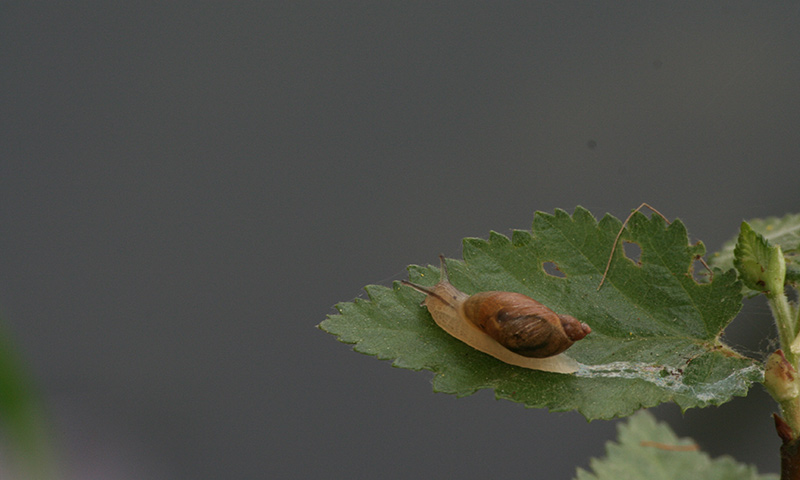How to Get Rid of Slugs and Snails in the Garden

Slugs and snails can cause more plant damage in one night than some garden pests achieve all season. While you're asleep — dreaming of your beautiful garden — they're feasting on your tender seedlings, edibles, and other plants. Morning reveals trails of slimy mucus and destruction few pests can match. But that scene doesn't have to happen in your garden. You can protect your plants and get rid of slugs and snails for good.
UNDERSTAND SLUG AND SNAIL BASICS
Getting rid of slugs and snails starts with understanding them. First of all, these pests aren't insects, so typical garden insecticides won't help. Slugs and snails are mollusks, a category of creatures that includes oysters, clams, scallops, and squid. The best slug and snail controls fall in a class of pesticides known as molluscicides.
Slugs and snails are close relatives that share many characteristics, including their eye-tipped forehead tentacles. But only snails have visible shells. Not surprisingly, given their mollusk connections, slugs and snails prefer damp, dark places. They rarely venture out during daytime except on dark, cloudy days. When you're inspecting your garden on a sunny day, you can find them in shady garden nooks under leaves, weeds, or damp garden debris.

Slug and snail eyes are on upper tentacle tips.
RECOGNIZE SLUG AND SNAIL DAMAGE
For many gardeners, the first clue of slug and snail problems is overnight plant damage. Slugs and snails eat tender plant leaves, stems, flowers and soft, succulent, ground-hugging fruits. Plant such as hosta, lettuce, basil, cabbage, tomatoes, and strawberries are frequent targets.
Both slugs and snails chew large, irregular holes in plants and fruits. Unlike the ragged bites left by some chewing pests, slug and snail holes have much smoother edges. But when trails of silvery mucus lead to and from the damage, you can be sure slugs or snails are to blame.
Snails and slugs are most active during moderately warm weather when garden soil is moist. Hot, cold, and dry conditions send them looking for cover, but moderate coastal climates face these pests year-round. Once you have leaf holes from slugs and snails, you can't fix them. You have to wait for new leaves to grow. Small seedlings damaged by slugs and snails are often lost.

Hostas are frequent slug and snail targets.
KILL GARDEN SLUGS AND SNAILS
In past years, traditional slug and snail killers included ingredients harmful to people and pets, so many gardeners turned to home remedies instead. Most DIY slug and snail remedies have two things in common: They're messy and ineffective. Pans of beer may attract slugs and snails, but they also require cleaning up drowning pests every day. And coffee grounds in the garden simply don't keep slugs and snails away.
Ineffective approaches can lead to big problems. Some snails need mates to reproduce, but others reproduce on their own. One snail may lay hundreds of eggs annually. Those baby snails mature within one to two years. Slugs mature in as little as three to six months.1 While most snails live five to seven years, some live more than three times as long.2 That's a lot of garden damage through the years.
With Corry's® Slug & Snail Killer ready-to-use pellets, you can kill slugs and snails without the worries associated with other products. This highly effective slug and snail killer contains an iron-related ingredient known as sodium ferric EDTA. You can treat your lawn, flower and ornamental gardens, and edible gardens right up to the day of harvest. People and pets may enter the area immediately after product is applied. After eating even a small amount of Corry's Slug & Snail Killer, slugs and snails stop feeding. Then they slink away to die in hiding, with no messy cleanup for you.

Slime trails prove slugs and snails are the culprits.
KEEP YOUR ADVANTAGE
Small changes in your garden routine can make a big difference when it comes to slugs and snails and their damage. Take steps to make your garden less inviting to new slugs and snails that arrive:
- Water your garden early in the morning so the soil dries well before nightfall comes.
- Use drip irrigation instead of sprinklers to minimize surface moisture that slugs and snails prefer.
- Incorporate plants with rough, tough or highly fragrant foliage. Slugs and snails typically bypass plants like sage, rosemary and lavender.1
- Plant landscapes to attract songbirds that feed on slugs and snails.
- Keep your garden free of plant debris and other pest hideouts.
- Reapply Corry's Slug & Snail Killer every two weeks or as soon as it disappears.
- The Corry's brand has been protecting plants against slugs and snails for more than 70 years. We know what it takes to handle these pests. With Corry's Slug & Snail Killer, you get effectiveness, convenience and peace of mind all in one easy-to-use product. So go ahead, get rid of slugs and snails with confidence and start enjoying your lawn and garden again.
Always read product labels thoroughly and follow instructions carefully.
Corry's is a registered trademark of Matson, LLC.
Sources:
1. Flint, M.L. and Wilen, C.A., "Snails and Slugs," University of California Statewide Integrated Pest Management Program, March 2018.
2. UCSB ScienceLine, "How Do Snails Reproduce," University of California Santa Barbara, May 2011.

